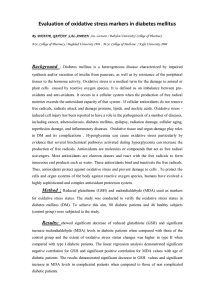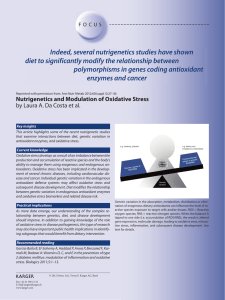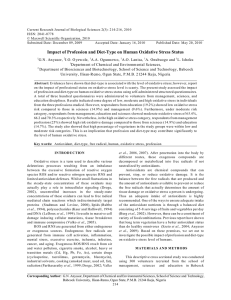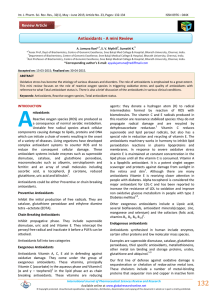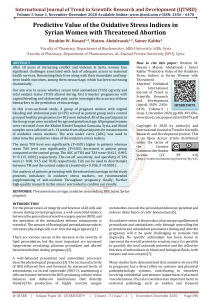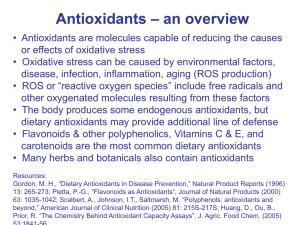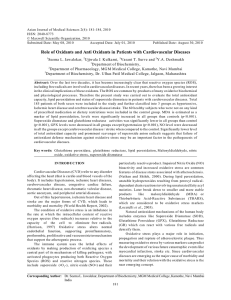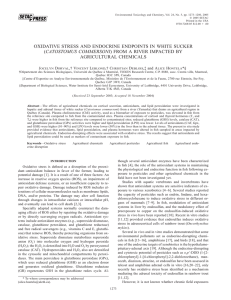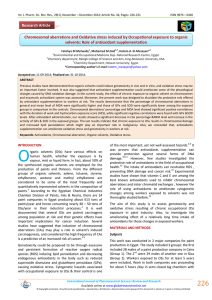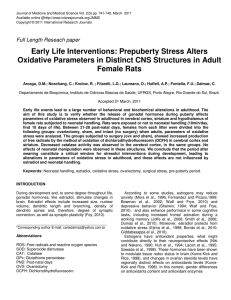Evaluation of oxidative stress markers during pregnancy
advertisement
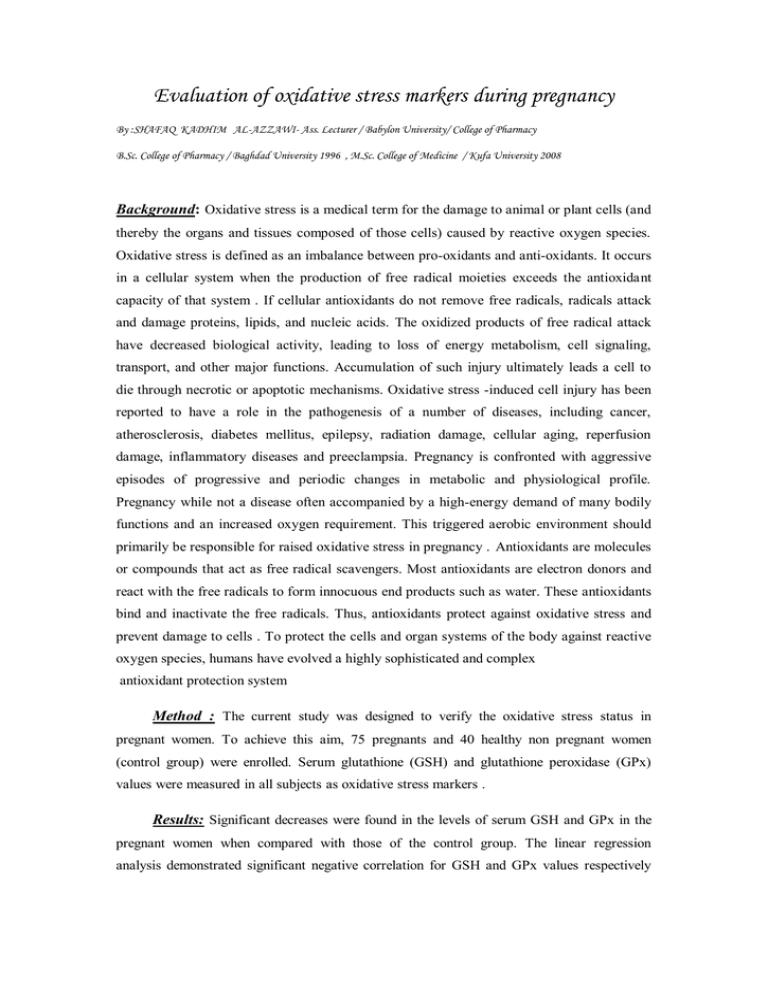
Evaluation of oxidative stress markers during pregnancy By :SHAFAQ KADHIM AL-AZZAWI- Ass. Lecturer / Babylon University/ College of Pharmacy B.Sc. College of Pharmacy / Baghdad University 1996 , M.Sc. College of Medicine / Kufa University 2008 Background: Oxidative stress is a medical term for the damage to animal or plant cells (and thereby the organs and tissues composed of those cells) caused by reactive oxygen species. Oxidative stress is defined as an imbalance between pro-oxidants and anti-oxidants. It occurs in a cellular system when the production of free radical moieties exceeds the antioxidant capacity of that system . If cellular antioxidants do not remove free radicals, radicals attack and damage proteins, lipids, and nucleic acids. The oxidized products of free radical attack have decreased biological activity, leading to loss of energy metabolism, cell signaling, transport, and other major functions. Accumulation of such injury ultimately leads a cell to die through necrotic or apoptotic mechanisms. Oxidative stress -induced cell injury has been reported to have a role in the pathogenesis of a number of diseases, including cancer, atherosclerosis, diabetes mellitus, epilepsy, radiation damage, cellular aging, reperfusion damage, inflammatory diseases and preeclampsia. Pregnancy is confronted with aggressive episodes of progressive and periodic changes in metabolic and physiological profile. Pregnancy while not a disease often accompanied by a high-energy demand of many bodily functions and an increased oxygen requirement. This triggered aerobic environment should primarily be responsible for raised oxidative stress in pregnancy . Antioxidants are molecules or compounds that act as free radical scavengers. Most antioxidants are electron donors and react with the free radicals to form innocuous end products such as water. These antioxidants bind and inactivate the free radicals. Thus, antioxidants protect against oxidative stress and prevent damage to cells . To protect the cells and organ systems of the body against reactive oxygen species, humans have evolved a highly sophisticated and complex antioxidant protection system Method : The current study was designed to verify the oxidative stress status in pregnant women. To achieve this aim, 75 pregnants and 40 healthy non pregnant women (control group) were enrolled. Serum glutathione (GSH) and glutathione peroxidase (GPx) values were measured in all subjects as oxidative stress markers . Results: Significant decreases were found in the levels of serum GSH and GPx in the pregnant women when compared with those of the control group. The linear regression analysis demonstrated significant negative correlation for GSH and GPx values respectively with the age of pregnant women. Significant elevation for GSH and GPx levels were indicated in pregnant women of the third trimester when compared with first trimester. Conclusion: The results illustrate the impact of pregnancy on oxidative stress parameters by decreasing the levels of antioxidants ( GSH & GPx).
